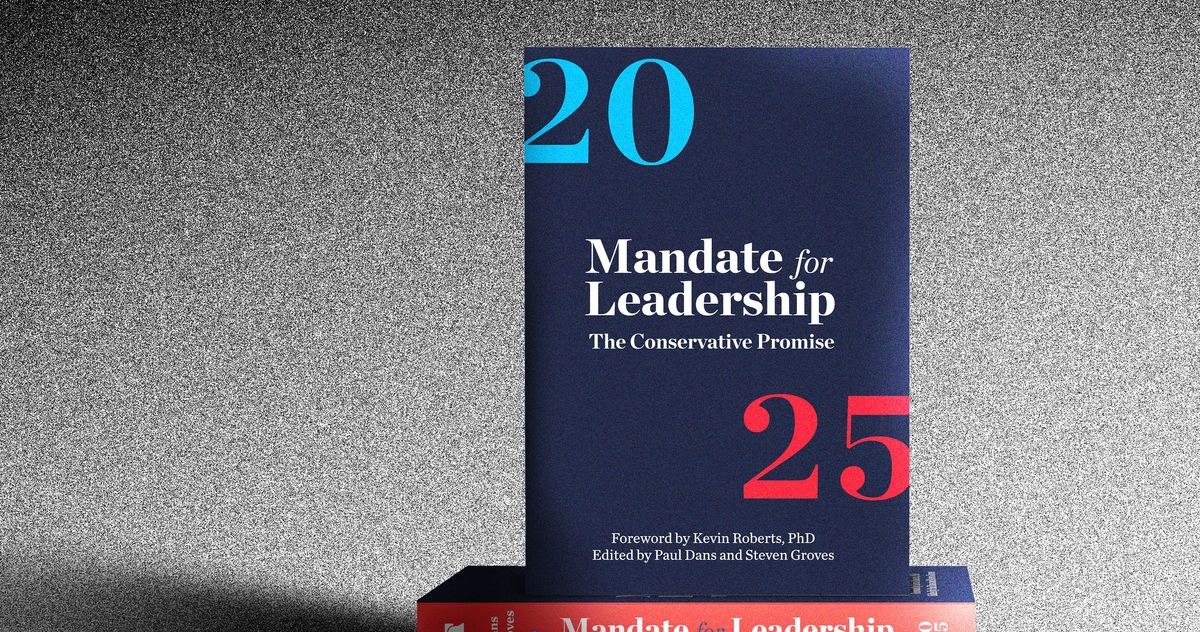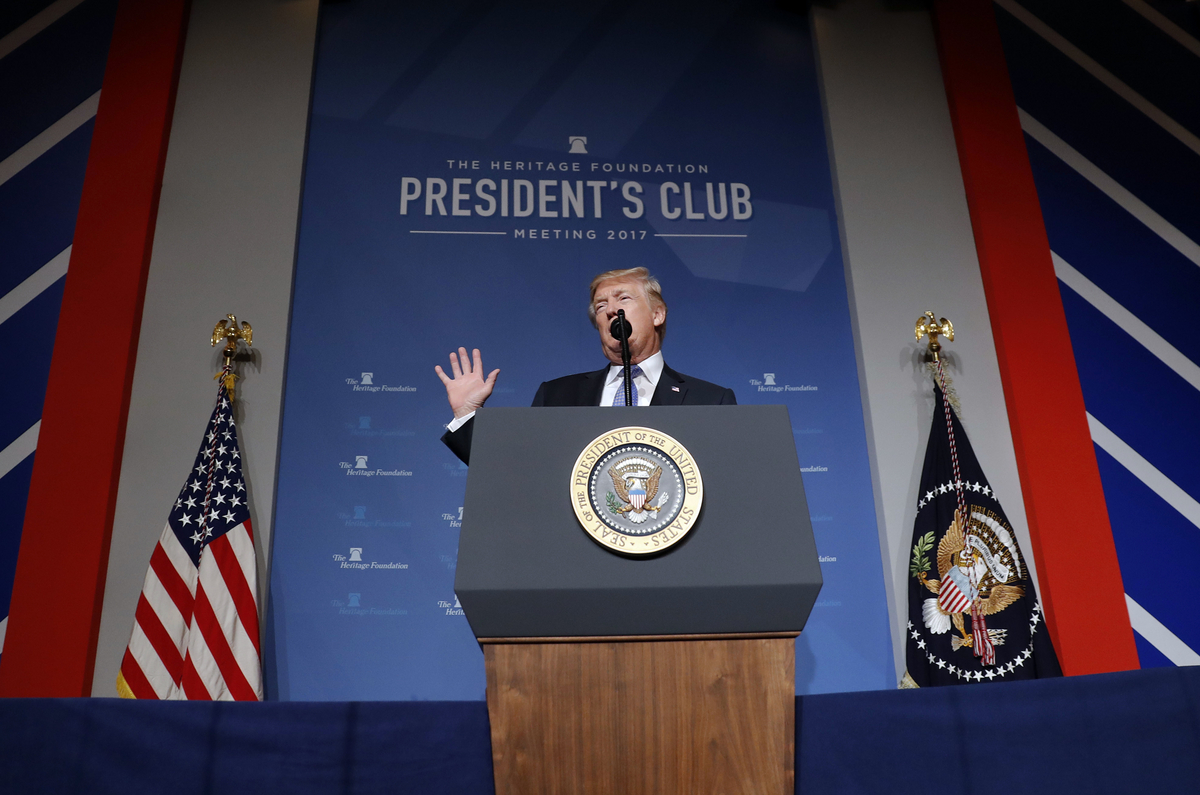Originally by Elizabeth Sander at www.houstonchronicle.com
Project 2025, the 922-page document that could outline policy agenda for a second Trump term, has been a talking point in Vice President Kamala Harris’ campaign and among Democrats nationwide who are concerned about far-reaching impacts. Project 2025 aims to instill conservative values in federal agencies and set a conservative tone for the U.S.
Former President Donald Trump has tried to distance himself from the agenda, which was created by the Heritage Foundation, a conservative think tank based in Washington D.C. But a CNN report found that 140 people who once worked for Trump are involved in Project 2025 in some capacity.
Speculation has been rampant about how the policy program that advocates for reducing federal education spending and returning more control to states would actually impact schools on the ground.
The Texas American Federation of Teachers has sounded its alarm on what the union sees as some of the main concerns around Project 2025, including revoking the congressional charter of the National Education Association, the largest teacher’s union in the U.S.
“We are particularly concerned about the potential impact on students from low-income households, students of color, LGBTQIA+ students, and students with disabilities,” reads the Texas AFT announcement. “The proposed changes could roll back decades of progress in civil rights and educational equity.”
Here are some of the main changes outlined in Project 2025 and how they would affect Texas students.
U.S. Department of Education
Project 2025 aims to eliminate the U.S. Department of Education, a move that could disrupt public school funding nationwide. The impacts would likely be most severe for students with special needs and low-income students, who receive extra dollars from federal programs. It could also reduce oversight into how any federal funding that is received is spent by states.
But in order to dismantle the U.S. Department of Education, Congress would have to vote to approve it, which would take an unlikely bipartisan effort, given that many members of Congress support federal support and oversight of education.
According to state funding reports, Houston ISD received almost 10% of its revenue from federal funds, accounting for $189 million of the district’s almost $2 billion budget.
By contrast, 7% or about $4 billion of Texas public schools’ $60.4 billion total operating revenue for the 2023-2024 school year. During the 2022-2023 school year, that was much higher, at 20% of $14 billion, due in large part to COVID-19 federal relief funds provided during and after the pandemic.
Some of the department’s responsibilities would be moved to other federal departments, but others would be transferred to states or eliminated altogether, which could mean uneven education policies and accountability measures across the country.
Special Education
One big change would come in the form of the funding structure for the Individuals with Disabilities Education Act, or IDEA. This act protects students with disabilities across the U.S. and provides funding and oversight to ensure that their needs are being met by the public education system.
Project 2025 calls for funding from IDEA to be provided to states in a block grant, instead of toward specific programs, and would lack parameters for the federal government to provide accountability for how that funding is used.
Some states might choose to continue the programs that already exist and provide IDEA funding in the same manner, but other states could overhaul it entirely and change the framework of education for students with disabilities substantially.
Additionally, Project 2025 advocates for some of the funding to funnel to parents of students with disabilities in Educational Savings Accounts, or private accounts for families to spend money on their children’s education with little governmental oversight.
These special education savings accounts are in line with Project 2025’s plan to create universal school choice and heavily fund school voucher programs, which have been criticized for siphoning funds from public education. Universal school choice is also one of Trump’s main educational platforms, according to his campaign website.
School vouchers have been a hot topic in Texas this year as Gov. Greg Abbott has said he has the votes he needs to pass a voucher bill during the next legislative session in 2025. Abbott has tried in previous years to pass a voucher bill during regular and special sessions but has not succeeded.
But vouchers, while lauded by some as giving parents more freedom over their children’s education, have not been widely successful in their implementation. In Arizona, for example, the state has incurred a large deficit due in part to overspending in the most expansive school voucher program in the U.S.. The program provides savings accounts for all families regardless of income, but has been controversial after some parents spent their publicly provided funds on Legos.
If implemented in its entirety, Project 2025 would lessen federal restrictions on charter schools and double the voucher amount from the current average of $10,000 to over $20,000 per recipient.
Project 2025 also calls for the elimination of the Community Eligibility Provision, which provides campuses with more than 25% low-income students or at risk-students with free breakfast and lunch, reducing stigma between students of different socioeconomic brackets and taking away the “reduced price” category, which many qualifying families still struggle to afford. It also reduces paperwork and streamlines the meal process for all students.
In September 2023, the threshold for participation in the provision was lowered from 40% to 25% in a final rule published by the USDA. According to the agency, this change “gives more high-need schools the option to elect CEP and offer all students healthy school meals at no cost when it is financially viable for them to do so.”
The USDA also recently strengthened nutrition standards for school meals, after research showed that for many students the most nutritious meal they receive is at school.
In Texas, 4,321 schools have adopted the Community Eligibility Provision and are able to provide free meals to all students, according to the Food Research and Action Center’s database. In the organization’s May 2020 report, it found that almost 15 million students nationwide received free meals through the provision in 2020, with Texas having at least 2 million students enrolled. With the recent changes to expand the program, this number will likely be much higher in the coming years. But if the provision is eliminated, as Project 2025 calls for, the burden to provide these meals may fall to the state or local school districts for implementation.
The policy agenda also calls for tapering off Title I funding over 10 years. The Title I program gives extra monetary support to districts for their students from low-income households. In order for a campus to be designated as a Title I school, 40% of its students need to qualify for free or reduced-price lunch. In the past year, many campuses have used Title I funding to offset deficits. For example, Spring Branch ISD had to cut some counselor positions as part of an effort to reduce $35 million from its operating budget, but at Title I campuses, schools were able to use the federal funding to keep a counselor.
In Texas 6,495 schools are Title I, part A schools, meaning they received federal funds during the 2023-2024 school year, according to the Texas Education Agency’s database. In Region 4 alone, encompassing Houston and the surrounding area, 1,080 schools receive Title I funding.
Before Title I funding is phased out, according to the plan, it would be transferred to the Department of Health and Human Services and be provided to states as a block grant, like the special education funding, which states could spend however they chose and would not have as much oversight on how the funds were disbursed.
Project 2025 proposed banning any use of federal funds for teaching critical race theory, known as CRT, in schools. According to Trump’s online platform, he will cut federal funding for schools “pushing” critical race theory and “transgender insanity” and “other inappropriate racial, sexual, or political content.”
Abbott signed a law in 2021 banning the teaching of critical race theory in K-12 schools and a more recent bill passed that banned teaching critical race theory at Texas universities.
Project 2025 also proposes redefining sex under Title IX to mean only biological sex at birth, overhauling the recent changes made by President Joe Biden’s administration to expand Title IX protections for LGBTQ+ people.
It also has a section on pronouns, mandating that teachers are not allowed to refer to a student by a name other than the one on their forms unless the student has parental permission. The same goes for pronouns, barring teachers from referring to a student with a pronoun other than the one corresponding to their biological sex.
The plan also allows teachers or other school staff to refuse to use a pronoun that doesn’t match a student’s biological sex assigned at birth if it conflicts with their “religious or moral convictions.”





